Avro Lancaster B Mk.I
Nose Art Kit

HK Models, 1/32 scale
S
u m m a r y : |
Description and Item No.: |
HK Models Kit No. 01E033 - Avro Lancaster B Mk.I Nose Art Kit |
Contents and Media: |
127 parts in grey styrene, 22 parts in clear, 19 in PE, and one decal sheet with markings for 4 nose sections. |
Price: |
£71.99 EU Price (£59.99 Export Price) Plus Shipping from Hannants |
Scale: |
1/32 |
Review Type: |
First Look |
Advantages: |
The parts are well-molded with nice-rendered surface details. The clear parts are exceptional. A new and novel approach to large-scale aircraft modeling. |
Disadvantages: |
The detail overall is on the soft side for this scale. To do the model justice, extra details in the form of instrument faces and levers/handles will have to be sourced from the spares box or aftermarket sets. |
Recommendation: |
I love this model. Although the kits reliance on aftermarket parts to bring it up to speed is a bit of a draw-back, once completed (and with a little help from the spars box) this will be an amazing kit. This is a really neat idea for large-scale aircraft models and one that I hope catches on. Wouldn’t 1/32 nose sections of the B-25, Ju-88, B-17, or B-26 be awesome!! Hope springs eternal:) Highly recommended! |
Reviewed by John Miller

Background:
The Avro Lancaster is a British Second World War heavy bomber designed and manufactured by Avro as a contemporary of the Handley-Page Halifax, both bombers having been developed to the same specification, as well as the Short Stirling. All three aircraft being four-engined heavy bombers adopted by the RAF during the same wartime era.
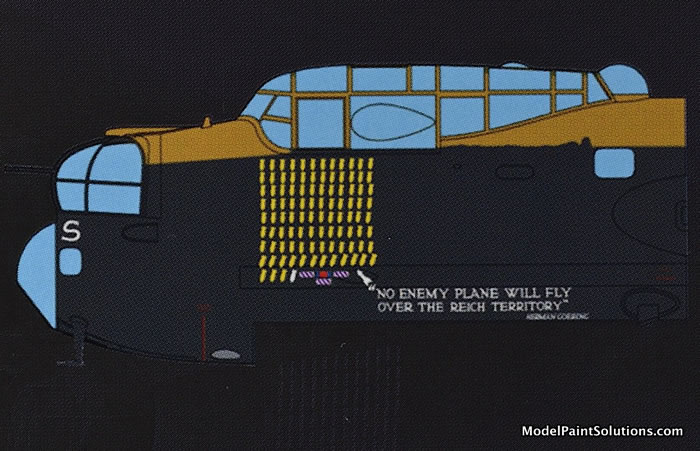
The Lancaster has its origins in the twin-engine Avro Manchester which had been developed during the late 1930s in response to the Specification P13/36 for a capable medium bomber for "world-wide use". As an evolution of the Manchester (which had proved troublesome in service and was retired in 1942), the Lancaster was designed by Roy Chadwick and powered by four Rolls-Royce Merlins and in one version, Bristol Hercules engines. It first saw service with RAF Bomber Command in 1942 and as the bombing offensive over Europe gathered momentum, it was the main aircraft for the night-time bombing campaigns that followed. As increasing numbers of the type were produced, it became the principal heavy bomber used by the RAF, the RCAF, and squadrons from other Commonwealth and European countries serving within the RAF, overshadowing the Halifax and Stirling.
Edited from Wikipedia
Introduction:
Thanks again to the evil proprietor of Skyway Model Shop for keeping a never-ending supply of new kits that test my ever-failing self-control. I’ve been looking forward to picking this hummer up for a while. It’s not without it’s faults but with a little help, this kit will be a real head-turner when built. Let’s hope other companies see the novelty of this approach and produce similar 1/32 kits. Wouldn’t the B-26 Marauder “Flak Bait” look awesome as a 1/32 nose section model? Any manufactures reading this?
Coming in a surprisingly compact, lidded box are the large, grey nose section halves. A third nose section half is molded in clear. In addition, there are 7 grey and 2 clear sprues, each within it’s own re-sealable bag. The large clear parts (canopy and clear, half nose section) are protected from the storage bag by thin sheets of clear plastic; very nice. The clear parts are absolutely beautiful and worthy of the added protection (see below).
The initial response is decidedly positive. The recessed details are crisp and scale-appropriate. Some may not care for the rivets being rendered as small holes but after primer and paint, I think the effect will be convincing.
The build starts with the cockpit (sorry, I had to). The build actually begins with the nicely detailed pilot’s seat comprised of 14 parts (3 photo-etch). Once assembled it’s glued onto the single-piece flight deck.
Next up is the navigator and wireless operators’ tables separated by a small bulkhead. Each position is outfitted with various electrical boxes and small panels, which are all nicely molded. Similarly, all of the smaller cockpit fiddly bits are cleanly molded and will look great under paint and a wash.
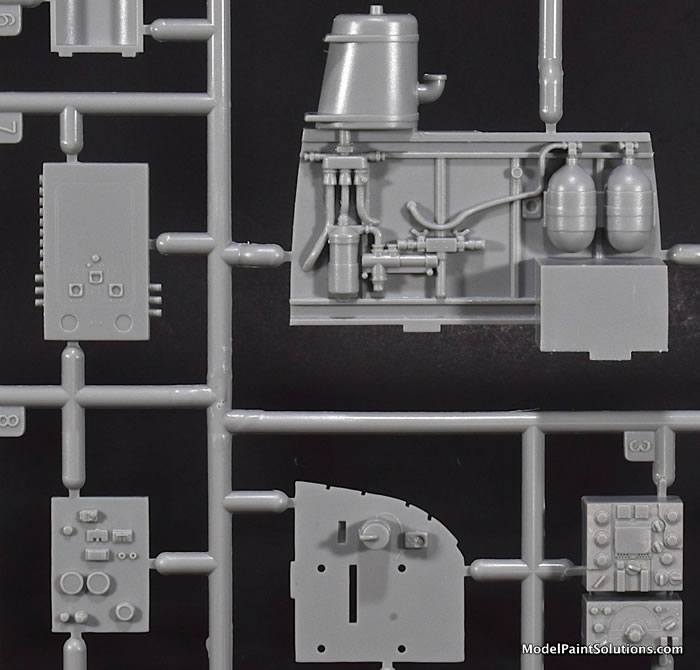
The main instrument panel is nicely molded but soft in detail and lacks any instrument faces. Interestingly, no instrument faces are provided on the decal sheet. Likewise, there are an insufficient number of levers and pull-handles on both the panel and throttle quadrant.
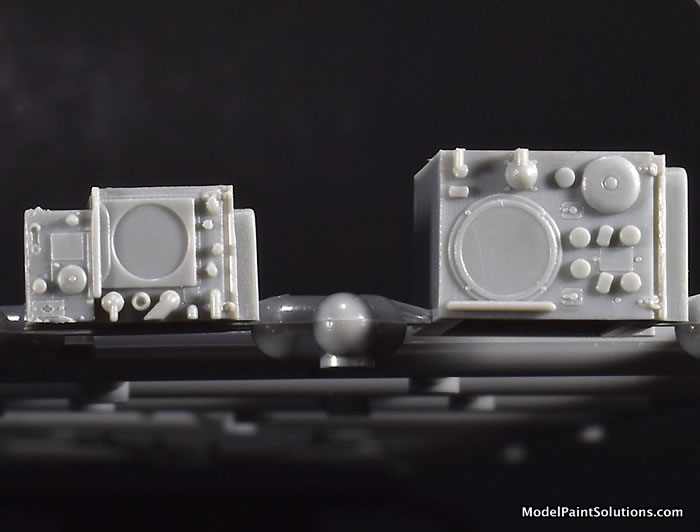
The builder will have to provide these details from the spares box or pick up an aftermarket set. To that end, both AirScale and Eduard have produced very nice PE and color-PE sets designed specifically for the kit that will drastically increase the level of detail in this area. The reliance on aftermarket sources to provide a sufficient level of detail in the cockpit area is a drawback of the kit.
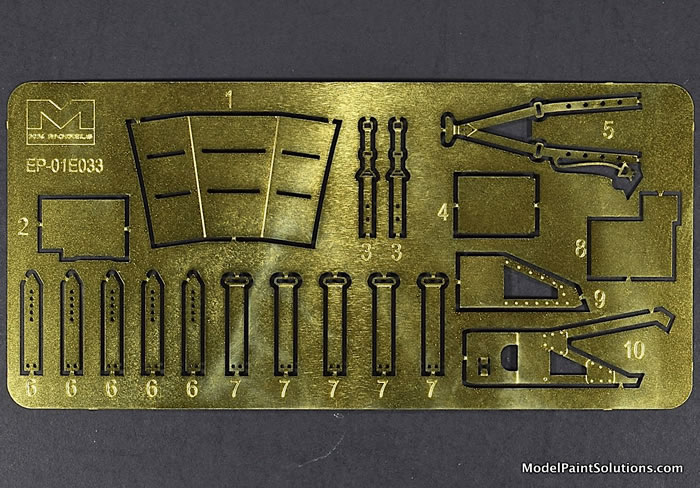
The flight engineer’s collapsable seat and station with it’s associated control panels are particularly well detailed. As with the main panel however, there are no instrument face details molded-in or provided by decal.
The gun site for the FN5 (Frazier-Nash 5) nose turret, comprised of 21 well-molded parts is next up and given the extraordinarily clear clear turret parts, super-detailers will have a blast adding additional details in the form if wiring and conduits (etc) in this area. Once built, the nose turret can be set aside as a sub-assembly that will slip into position later on the build.
With the flight deck complete, the builder is directed to assemble the small bomb-aimers compartment by attaching various panels and gear to the front sections of the left and right nose halves. Here too, super-detailers will have a blast adding addition details that will be easily appreciated through the exceptionally clear bomb aimers bubble.
Once the bomb aimers compartment is complete, the assembled flight deck is trapped between the nose sections. Various external airframe parts including the bomb aimers bubble, pitot-static tube, and antennae are scheme-specific so the instructions should be carefully followed at this point in the build. With these pieces attached, the builder can focus on the amazingly clear and crisply molded canopy pieces.
In addition to being quite clear, the canopy framing is scale appropriate with crisply rendered rivet details. These canopy parts will look awesome under primer and paint. Good thing too as they will be covering what will be the focal point of the build, the cockpit.
For those interested, a clear version of the starboard nose half is provided that lacks some of the inscribed surface details found on the versions molded in grey styrene. In particular, the riveting has been deleted. This clear half will give builders the option of assembling a “see-through” version of the model: very cool. Once the main canopy is attached, the previously assembled nose turret slips into place and the build is largely complete.
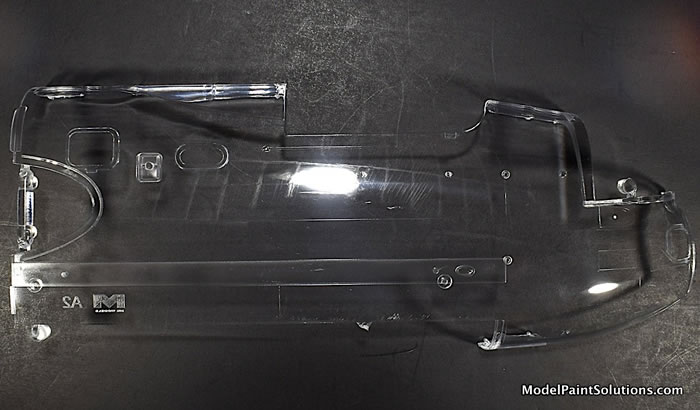
To facilitate displaying the completed nose section in a realistic way, a trellised support frame with wheels is provided that attaches to integral support brackets on each side of the nose.
Markings
The decals, by Cartograf, are crisply printed with appropriate color and hue.

The pin-up art for scheme four, “Victorious Virgin” is particularly well done. Markings are provided for four airframes as follows:
-
Avro Lancaster B Mk.I, R5868/OL-Q, No. 83 Squadron, RAF, Wyton, UK, June 1943.
-
Avro Lancaster B Mk.I, R5868/PO-S, No. 467, Squadron, RAAF, Waddington, UK, May 1944.
-
Avro Lancaster B Mk.I, W4783/AR-G, No. 460 Squadron, RAAF, Binbrook, UK, May 1944.
-
Avro Lancaster B Mk.I, RF128/QV-B, No. 424 Squadron, RCAF, Skipton-on-Swale, UK, Spring, 1945.\
I love this model. Although the kits reliance on aftermarket parts to bring it up to speed is a bit of a draw-back, once completed (and with a little help from the spars box) this will be an amazing kit. This is a really neat idea for large-scale aircraft models and one that I hope catches on. Wouldn’t 1/32 nose sections of the B-25, Ju-88, B-17, or B-26 be awesome!! Hope springs eternal:) Highly recommended!
Now I gotta get back to painting something.
Highly Recommended!
For more on this review visit Modelpaintsolutions.com.
Kit eagerly purchased by reviewer.
Text and Images Copyright © 2021 by Model Paint Solutions
Page Created 3 June, 2021
Last updated
3 June, 2021
Back to HyperScale Main Page
Back to Reviews Page
|
Home
| What's New |
Features |
Gallery |
Reviews |
Reference |
Forum |
Search